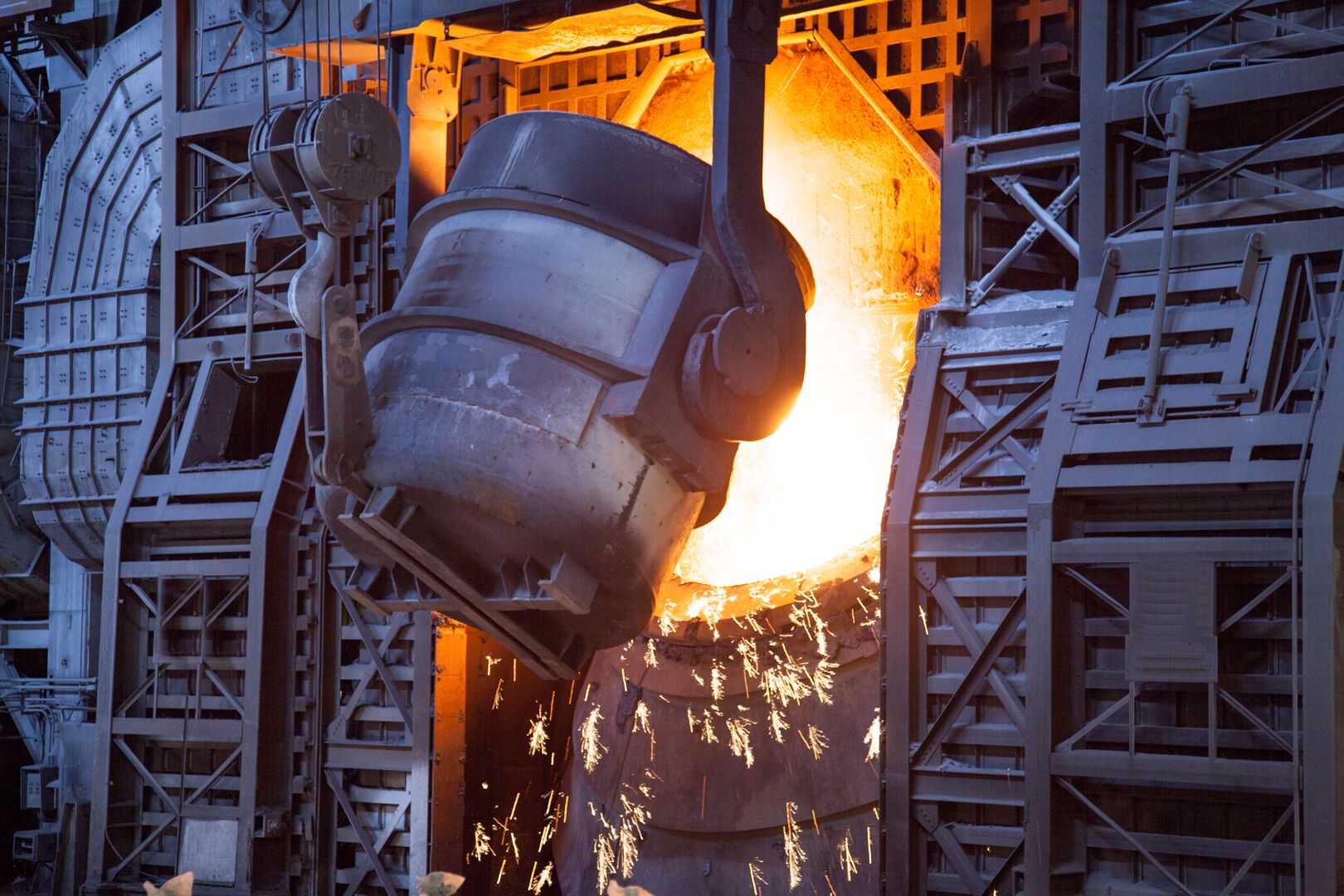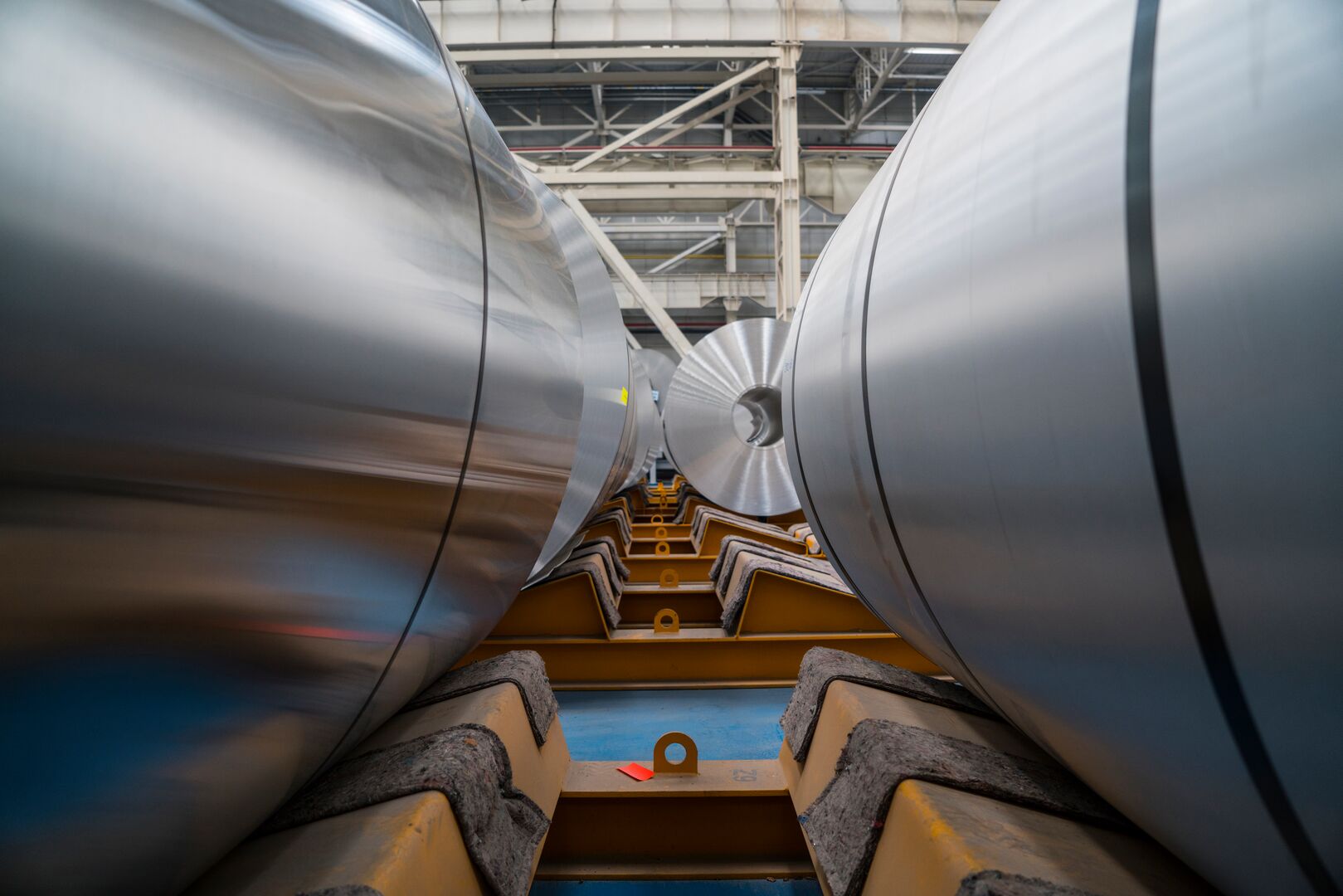Steelmaking may be hard to abate, but there’s new mettle within the industry to rethink the entire value chain and quash carbon emissions for good.
According to the head of the World Steel Association (worldsteel), Edwin Basson, three things recently happened on the way to the steel mill that have accelerated the industry’s ability to decarbonize. It may yet take 20-30 years of investment in innovative new processes, along with universally available green hydrogen, and a chunk of carbon capture and storage to get to net zero, but the iron gates have been flung wide to new possibilities by a confluence of events.

First, in 2020 China’s president Xi Xinping pledged that the world’s biggest steel producer with 57% of global output (that year China was the first to reach more than one billion tons of output) would achieve carbon neutrality by 2060, and also see no increase in CO2 emissions by 2030. Basson says many of the world’s steel makers had been waiting for China to make a move — the decisive stride in its policy signaled the start of a race to rethink.
Alongside China’s starting gun, the US regime switch two years ago to a more globally engaged leadership with a strong focus on decarbonization, “gave rise to an almost 180-degree turn”, Basson says, in the resolve of the steel-making industry to go beyond production efficiencies and tackle the hard-to-abate ore-refining process, its energy sources, and importantly, how steel is used, reused and recycled.
A new wave of progressive CEOs in the industry is the third element Basson cites as having contributed to a change in steely attitudes which have previously focused on wringing every energy and material saving out of the 300-year-old steel-making process — to benefit the balance sheet and reduce carbon emissions on the side. worldsteel says that efficiency measures in the industry have reduced energy consumption by around 60% since the 1960s, contributing to “a significant reduction in CO2 intensity”.
The revised approach? Basson says, it is driven “by the realization that as a global society, we cannot continue to emit the amount of CO2 that we are still emitting”. And that tweaking existing blast furnace technology can no longer deliver the quantum leap in carbon reductions required to save the planet.
A hotbed of opportunity
The steel industry contributes around 8% of the world’s carbon emissions and is largely (73%) reliant on blast furnace and basic oxygen furnace (BOF) technologies to separate oxygen from the iron oxides that make up iron ore and produce the strong, permanent material known as steel.
Making steel involves several applications of extreme heat. Among them, the heating of coal at around 1000 degrees Celsius in the absence of oxygen to drive off impurities resulting in a much stronger product ‘coke’. The cooled coke, which contains 90-93% carbon, is fed into a blast furnace process, along with iron ore and limestone; air, heated to 1000-1200 degrees Celsius, is blasted into the furnace, initiating a series of chemical reactions that ultimately produce pig iron and CO2.
Pig iron still retains about 4% carbon, which renders it too brittle for most applications, and the BOF is used to further reduce this concentration and other impurities to produce steel with a carbon content in a range of about ~ 0.02-2.1% In the BOF, pig iron, scrap metal (about 15-20%) and burnt lime (known as flux) are heated and pure oxygen is “blown” into the mix via a water-cooled lance, which oxidizes the carbon and silicon in the hot iron and liberates more heat which in turn melts the scrap. The molten mass of resulting steel is tipped into a ladle and may go on to a further, heated, refinement process, to meet customer specifications.
Little wonder that Basson says the single greatest challenge to decarbonization faced by the industry is, “Where do we get our energy from?” At the moment, he says, coal is not only the main source of heat for the various stages of the process but, ''provides us with the basis of the chemical reaction that extracts iron from its oxidized state in iron ore''— and therein lies the definition of hard to abate. Making steel from iron ore currently relies on carbon to drive the reaction; the by-product of which is CO2.

Today, the production of each ton of steel results on average in the emission of 1.8 tons of CO2. “By worldsteel evaluations,” says Basson, “we think the best the industry can get to over coming decades, even using new technologies” that are still under development and subject to upscaling is 0.3 tons, or 300 kilograms of CO2 emitted per ton of steel — hence the role for carbon capture and storage.
Innovation unleashed
Basson, who prior to his almost 11-year tenure as head of worldsteel held executive positions at ArcelorMittal, one of the world’s largest miners (iron ore and metallurgical coal) and steel producers, says he’s proud to see the industry’s fresh “willingness to experiment with new technologies”. He says it’s almost as if the China/US/CEO factors have “unleashed a new wave of freedom of experimentation within the industry”.
A report, Iron and Steel Technology Roadmap produced by the International Energy Agency (IEA) with important contributions from worldsteel released in October 2020, detailed the challenges and possibilities for the industry. It notes that, “Steel companies and regional steel associations accounting for roughly one-third of global steel production have set targets to achieve net zero emissions by 2050 or earlier,” and that “Most of these targets were set in the past three years.”
The separate tracking report also starkly stamps the steel industry as “Not on track” to meet emissions reductions in line with the Paris Climate Accord to prevent global warming greater than 1.5-2 degrees Celsius compared to pre-industrial levels.
Required: more policy, more pilots!
It calls, therefore, for emissions reductions to be tackled from every angle, with governments setting policies that encourage research and development into new processes. In India, the world’s second-largest steel producer with an output of 118 million tons in 2021, for example, the government’s Perform, Achieve and Trade (PAT) scheme incentivizes industry to pursue energy efficiency, and therefore emissions reductions.
In Europe, government agencies and funds support several specific projects, such as Siderwin which is developing a new ore-refining process in Mazières, France. Since 2017, the European Union’s Horizon 2020 program has funded 12 European partners coordinated by ArcelorMittal, to scale up a process first developed in the early 2000s at lab scale, which immerses iron ore in an electrolytic bath — no coking coal, no carbon emissions, just electricity from a future renewables-powered grid — that draws oxygen from the raw material to produce iron metal. Adding carbon to adjust the grade of metal will in this case be carried out during the melting of iron produced by the process, to form steel to customer specifications.
Design to reuse, not recycle
Further down the supply chain, demand can also be moderated, with initiatives to improve recovery of recyclable materials. Basson says that the world must begin to use steel differently in major industries such that it can be reused without incurring the energy load of melting down, remolding and machining.
worldsteel aims to produce high-quality research that will result in the decarbonization of steel throughout the value chain, and one of its strategies is to collaborate with industries that use large amounts of steel on how to reduce future demand for the material. The current transition by the automotive industry to produce electric vehicles (EVs) provides an opportunity, says Basson. “We are in the middle of a significant redesign of how steel is used in the new automotive environment because the weight distribution of the EV is very different to that of internal combustion engine vehicles, which makes the requirements of steel very different.” It’s the right moment to design new kinds of steel components that can be reused in the automotive industry.
Basson believes that in large steel-consuming industries such as oil and gas there must also be “opportunities for reusing steel in its existing shape or form for future installations, without having to remelt and rework it”. Companies could also apply their engineering expertise to designing steel infrastructure or components of products for easy recovery and reapplication.
At the same time, Basson says, the industry needs to look at how it labels today’s steel with its specifications, so that when it is recovered, say from construction sites, it can be redirected and reused with confidence.

There are limits to the electric arc
Where direct reuse is impossible, steel can be endlessly recycled. An alternative to the BF-BOF method of steel production from iron ore is electric arc furnace (EAF) technology already used to produce some 30% of the world’s steel. EAF uses high-power electric arcs between a cathode and anodes, to melt scrap metals and iron along with purifying additives to produce as-new steel.
Greater use of EAF will play an important role in decarbonizing the steel industry, but, says Basson, it currently has two limitations. First, it requires a high, consistent supply of electricity[1] — and because most of the global electricity supply is still coal or gas generated, those carbon emissions from fossil fuel energy generation must be calculated into the steel production. Renewable sources of energy will have to become more prominent and reliable — backed by storage in the form of batteries or hydrogen — in the grid to make electrification of high-energy industrial processes, including steelmaking, cleaner.
In addition, supplies of scrap steel may only be enough to produce 40-45% of future demand. Basson explains: “Scrap generation in China right now comes from steel used in the 1980s. In 1980, China used in the order of 500 million tons of steel annually, now it uses close to a billion tons, and our best estimation is that the gap between demand and supply of scrap is expected to persist until at least 2070.”
On the way to hydrogen–assisted ore reduction
Another promising avenue for lowering the emissions of steel making in the short term is to increase the production of gas-based direct reduced iron (DRI), which currently accounts for only 5% of steel production. The direct reduction process removes oxygen from iron ore in the solid state — using carbon monoxide and hydrogen from reformed natural gas or syngas to bind with the oxygen in iron ore — without melting in a blast furnace. Even though natural gas and syngas are currently fossil-fuel based, emissions from gas-based processes are lower than from the coal-based processes. And systems that are configured now to use gas will more easily be able to transition to using green hydrogen as that zero-emissions gas becomes more readily available. And they can be retrofitted with CCS as carbon capture technologies become better supported with pipeline and storage infrastructure at scale.
“We’re sure hydrogen is part of the solution to reducing CO2 emissions from steel making,” says Basson. “It can replace coal reduction of iron and basically produces only water vapor as a byproduct”. He adds that many ways of cost-effectively delivering green hydrogen to the industry are being evaluated. One supply chain avenue, for example, is to produce hydrogen using solar energy in consistently sunny countries such as Australia, and process it into ammonia, which is more easily and safely shipped to its user destination than hydrogen. Another possibility could be for the DRI to be produced at the source or the mine instead, thereby avoiding the transport of hydrogen.
A much-referenced example of a government-supported private-enterprise project that integrates hydrogen into the steel making process is HYBRIT. This partnership between iron ore miner LKAB, global steel manufacturer SSAB, and energy provider Vattenfall, supported by the Swedish Energy Agency, and this year also by the EU Innovation Fund, seeks to demonstrate the world’s first completely fossil fuel-free value chain for iron and steel production. HYBRIT produced its first fossil-free steel by direct reduction using green hydrogen in August 2021. That initial gas supply was drawn from a pilot-sized green-hydrogen storage facility, but the consortium has now almost completed preparation of a lined rock cavern that can store around 100 gigawatt hours of renewable hydrogen (enough to supply a full-sized steel mill for three to four days) produced by electrolysis powered primarily with excess generation from wind farms in the region. This will ensure a ready supply of clean hydrogen without overburdening local electricity grids.
One of the priorities of worldsteel research, dissemination of information, and support of its members is to ensure that any new steelmaking infrastructure is built according to the latest known best practice and has the lowest possible carbon footprint. Says Basson, “The key is to make sure that new capacity is focused on CO2 reduction.”
Ultimately, he concludes, new integrated solutions will come from concerted global efforts because, “No single country has a full understanding of the technologies or of the supply chain. Therefore, we will have to continue for the next number of years to share experiences and information in a way that does not breach antitrust considerations.” worldsteel holds an annual open forum dedicated to this purpose. It brings industry participants together in an effort to share what aspects they can about what they know, and perhaps more importantly “what the industry still needs to learn in order to plug the gaps” in bringing clean steel to market and helping customers to judiciously apply it.
Even though numerous opportunities are in their infancy, Basson says, “It’s very exciting. There are so many different ways that people use and depend on steel that whatever we do will be all pervasive. We have to try to capture the biggest opportunities, many of which will eventually have less to do with steelmaking than with steel using.” Getting low-emissions production in place now will allow sustainable reuse of this versatile material in future.
Footnotes
- [1] For 100% scrap charge, the combined energy input used for the electrolyser and EAF is 2.1 - 2.3 GJ/t. For 100% hydrogen-based HBI charge, the combined energy input used for electrolyser and EAF, the conservative number is ~ 12.5 GJ/t. For 50% scrap + 50% H2 HBI the combined energy input could come down to ~ 7.4GJ/t.
Energy Forward Stories
Sign up to stay up to date on the latest innovations and people shaping the future of our industry.





